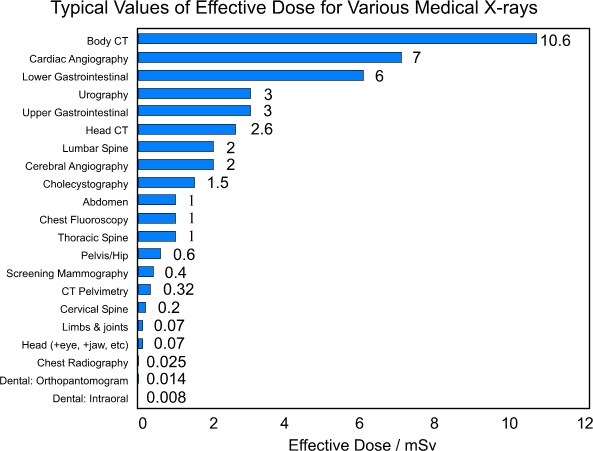True or False: Dental X-ray Radiation Levels are High
- Alexis S.
- Mar 8, 2016
- 2 min read
We've all heard the statements about the dangerous levels of radiation coming from dental x-rays but are these statements really true?
In short, no. As a matter of fact, a single tooth x-ray is much safer than flying from Los Angeles to New York in terms of radiation dosage.
Let's back up, though. What is an x-ray?

In scientific terms, an x-ray can be defined as a type of radiation that is created by using large amounts of electricity in order to produce medical imaging.
There are different types of x-rays used for dental purposes, and the radiation dosage varies depending on the type, size, and technology used to capture the image.
Why do the dentists need x-rays?
An x-ray will show the dentist everything that cannot be seen with the naked eye, including in-between teeth, under the gum line, and the root system. The information gained from these medical images can be extremely valuable and can be the difference between good and bad oral health.
At Hintz Family Dentistry, there are three different x-rays that we typically take: an intraoral peripical film (or PA), a panoramic film (nicknamed Pan or Pano), and bitewings. A PA is taken when the dentist needs an x-ray of one tooth or one area of the mouth, like if you came in stating that a tooth on your lower, left side of your mouth was hurting. A panoramic film is an x-ray of your entire mouth on one film; these are typically taken if you are seeking a referral to get your wisdom teeth pulled or request orthodontia. Bitewings involve either two or four films (depending on the patient's age) of four quadrants of the mouth, and we take bitewings on an annual basis at check up's in order to give a complete evaluation.
So, dental x-rays are safe?

Yes and no.
The bad connotation that comes with the word "radiation" is there for a reason: radiation can be harmful. However, radiation dosages from dental x-rays are extremely low and represents a minor contribution to the total exposure from all sources.
I have included some infographics that I hope can help put it into perspective for you.
So, it is important to keep in mind that although dental x-rays involve radiation, the radiation levels are low and these dental x-rays are important for good oral health!
References:
Dental Radiographic Examinations: Recommendations for Patient Selection And Limiting Radiation Exposure. (2012). Retrieved December 23, 2015, from http://www.ada.org/~/media/ADA/Member Center/FIles/Dental_Radiographic_Examinations_2012.ashx
Dr. Kyle, S. (2015, June 24). How Often Should You Get Dental X-rays? Retrieved December 23, 2015, from http://www.beverlyhillsladentist.com/blog/author/dr-kyle-stanley/
Health Information for Specific Groups. (2014, October 13). Retrieved December 23, 2015, from http://emergency.cdc.gov/radiation/prenatal.asp
Jerry, P. (2008, August 1). X-ray Frequency and Safety (R. Dr. Garry A., Ed.). Dear Doctor. http://www.deardoctor.com/inside-the-magazine/issue-8/x-ray-frequency-and-safety/
Medical imaging (x-rays) and cancer-cancer myth. (2014, September 22). Retrieved December 23, 2015, from https://www.cancerwa.asn.au/resources/cancermyths/medical-imaging-myth/
Steve D., R. (n.d.). How Much Radiation Do You Get From Dental X-Rays. Retrieved December 23, 2015, from http://www.physics.isu.edu/radinf/dental.htm

The content on this blog is not intended to be a substitute for professional medical advice, diagnosis, or treatment. Always seek the advice of qualified health providers with questions you may have regarding medical conditions.






































Comments